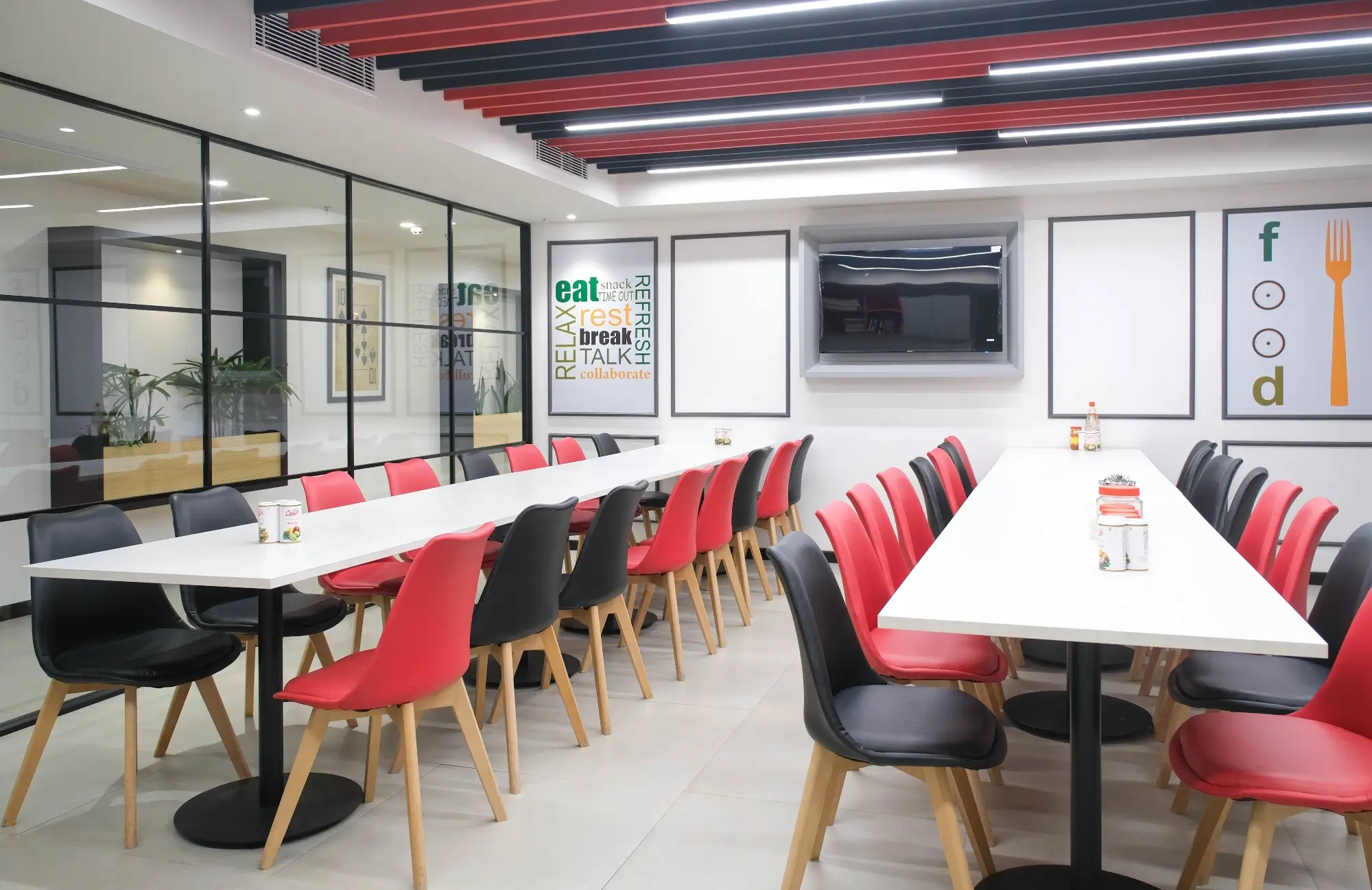- Defines the overall ambiance and character of a workplace
- Shapes brand perception, supports employee well-being, and impacts productivity
- Involves strategic use of colors, textures, and materials that align with both practical needs and aesthetic goals
- Ensures an environment conducive to collaboration, focus, and clear branding
Why Office Interior Wall Design Matters
First Impressions
- Reflects professionalism and care in every detail
- Sets expectations for visitors, clients, and new hires
Brand Cohesion
- Aligns with corporate color palettes and values
- Reinforces logos, slogans, and thematic graphics seamlessly
Employee Productivity and Comfort
- Incorporates colors (e.g., blues, greens) that promote calmness and concentration
- Uses textures (e.g., acoustic panels, soft fabrics) to minimize noise and stress
Future-Proofing
- Adaptable wall designs can be updated as trends or corporate branding evolves
- Emphasizes versatile finishes and modular installations
For professional interior design standards, refer to the American Society of Interior Designers (ASID). Their guidelines help ensure safety, quality, and longevity in your wall design choices.
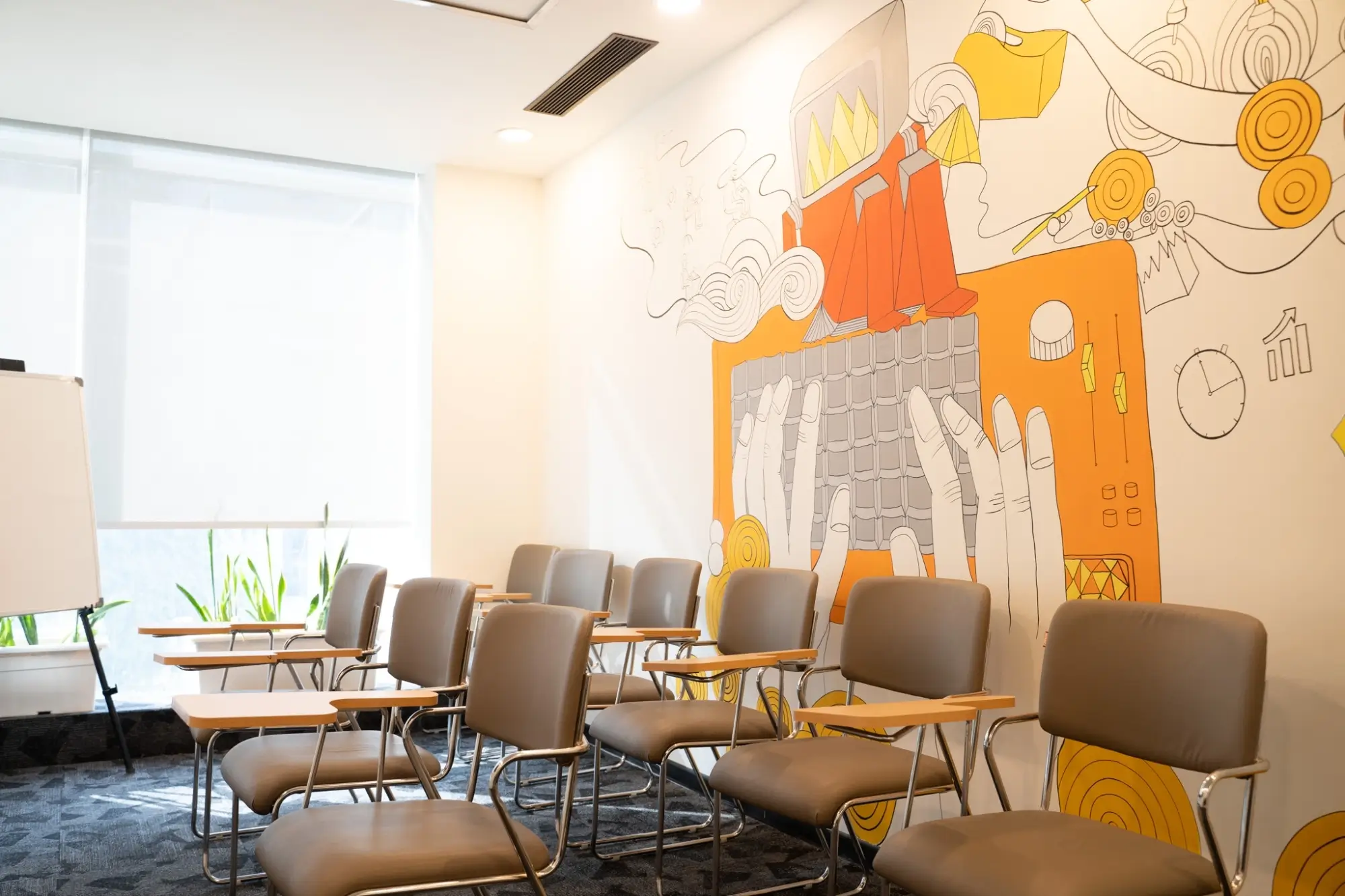
Key Strategies for Office Interior Wall Design: Using Colors, Textures, and Materials Effectively
Color Selection
- Opt for cool hues like blues and greens in areas demanding focus
- Incorporate warm tones (reds, oranges) in meeting spaces to foster energy
- Blend neutral shades (whites, beiges, grays) for a clean, professional backdrop
Texture Integration
- Combine exposed brick or wood for a rustic or industrial look
- Install fabric panels to enhance acoustics and add visual contrast
- Balance smooth surfaces (paint, glass) with rough finishes (stone, textured wallpaper)
Material Considerations
- Use paint or high-quality wallpaper for quick and cost-effective updates
- Embrace glass partitions for an open feel while maintaining partial privacy
- Incorporate metal accents or reclaimed wood for edgy, eco-conscious touches.
Brand Expression
- Display mission statements, logos, and core values on feature walls
- Install corporate-themed murals or backlit signage for a memorable impact
- Ensure consistent branding across hallways, lounges, and conference rooms
For more office wall design inspirations, check out Houzz, which offers a wide range of visual examples to spark ideas.

Combining Colors and Textures Thoughtfully
Accent Walls
- Paint or wallpaper one wall in a bold shade that complements surrounding neutrals
- Incorporate textured features (e.g., reclaimed wood, decorative paneling) to create a focal point
Zoning Spaces
- Assign specific color and texture schemes to collaborative zones vs. private offices
- Provide clear visual cues that delineate different work functions
Maintenance and Durability
- Use stain-resistant paint finishes or high-grade wallpapers in corridors and high-traffic rooms
- Periodically refresh high-wear areas to preserve a polished look
Lighting Factors
- Adjust paint sheen or choose reflective materials to compensate for low natural light
- Use brighter colors in smaller offices to create an illusion of spaciousness
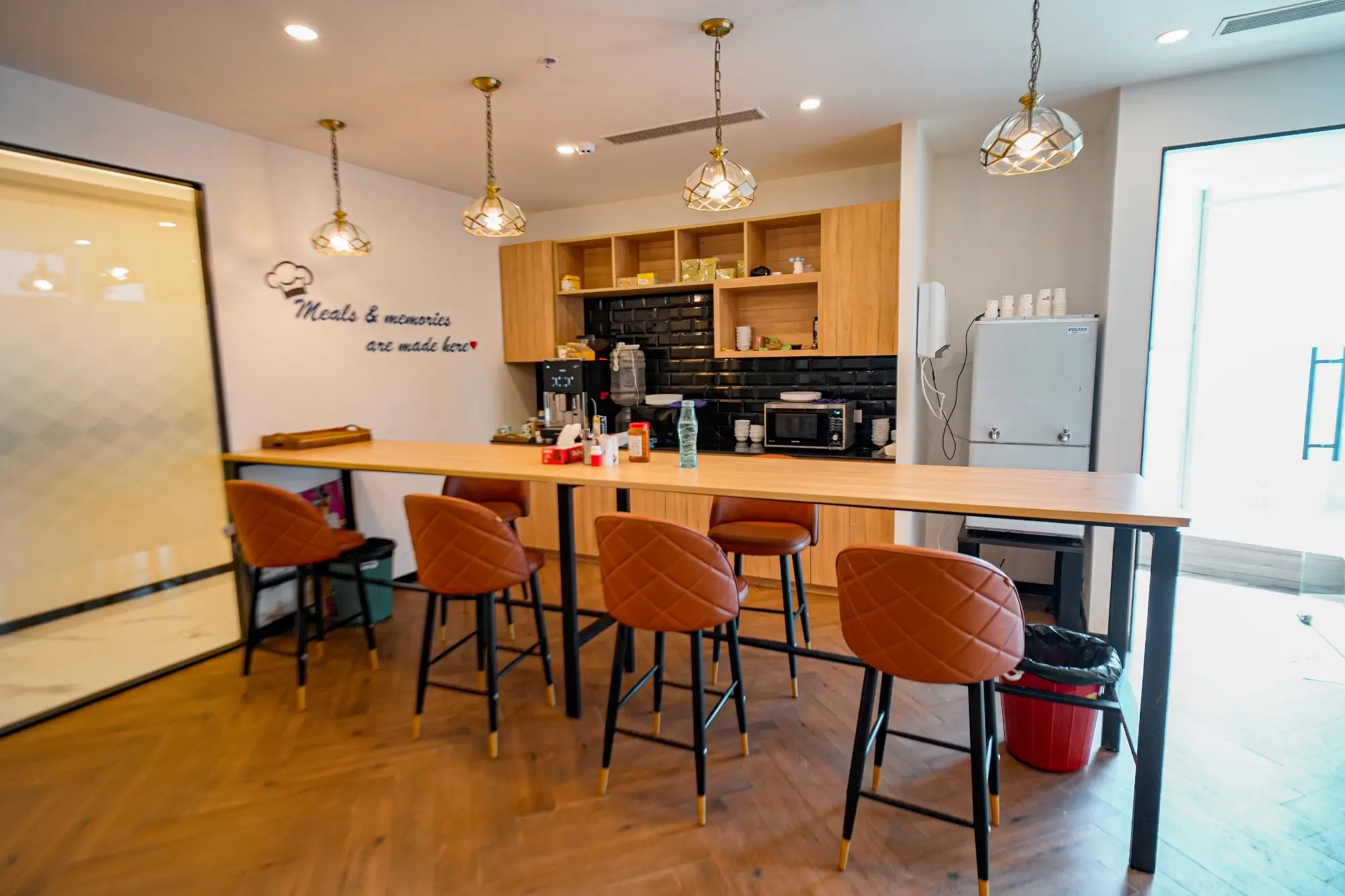
Selecting the Right Materials for Office Interior Wall Design
Paint
- Broad range of finishes and colors
- Low-VOC options for healthier air quality
- Quick and budget-friendly to apply
Wallpaper / Vinyl
- Ideal for adding patterns or bold visuals
- Commercial-grade varieties for robust wear and tear
- Easily replaced if you need frequent design updates
Fabric or Felt Panels
- Enhance acoustics by dampening ambient noise
- Provide a softer, more inviting feel in conference rooms or quiet zones
Brick, Stone, and Wood
- Introduce texture and a natural element
- Fit well in creative or industrial-themed offices
- Higher upfront cost but can last for decades with proper care
Glass Partitions
- Encourage transparency and open communication
- Maintain a sense of spaciousness, crucial in smaller offices
- Allow for branded decals or frosted designs for semi-privacy
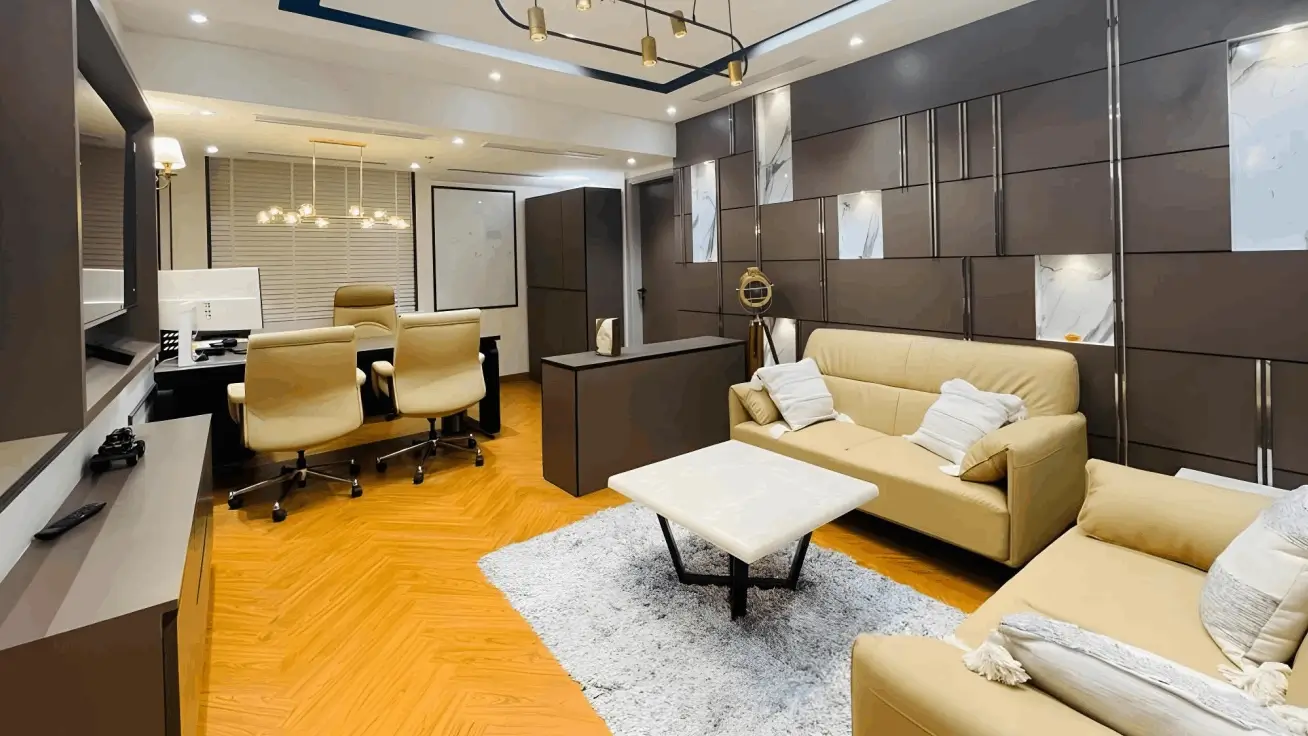
Avoiding Common Pitfalls in Office Interior Wall Design
Overusing Bold Colors
- Too many striking shades can overwhelm and distract employees
- Limit bright palettes to focal walls, trims, or branding highlights
Ignoring Practical Needs
- High-traffic areas may need scuff-resistant materials
- Conference rooms benefit from improved acoustics rather than purely aesthetic walls
Mismatched Themes
- Randomly blending rustic stone with sleek glass partitions can clash unless carefully coordinated
- Maintain a cohesive narrative across all spaces
Short-Term Thinking
- Invest in quality finishes that stand up to daily wear
- Schedule periodic maintenance checks for paint or wallpaper
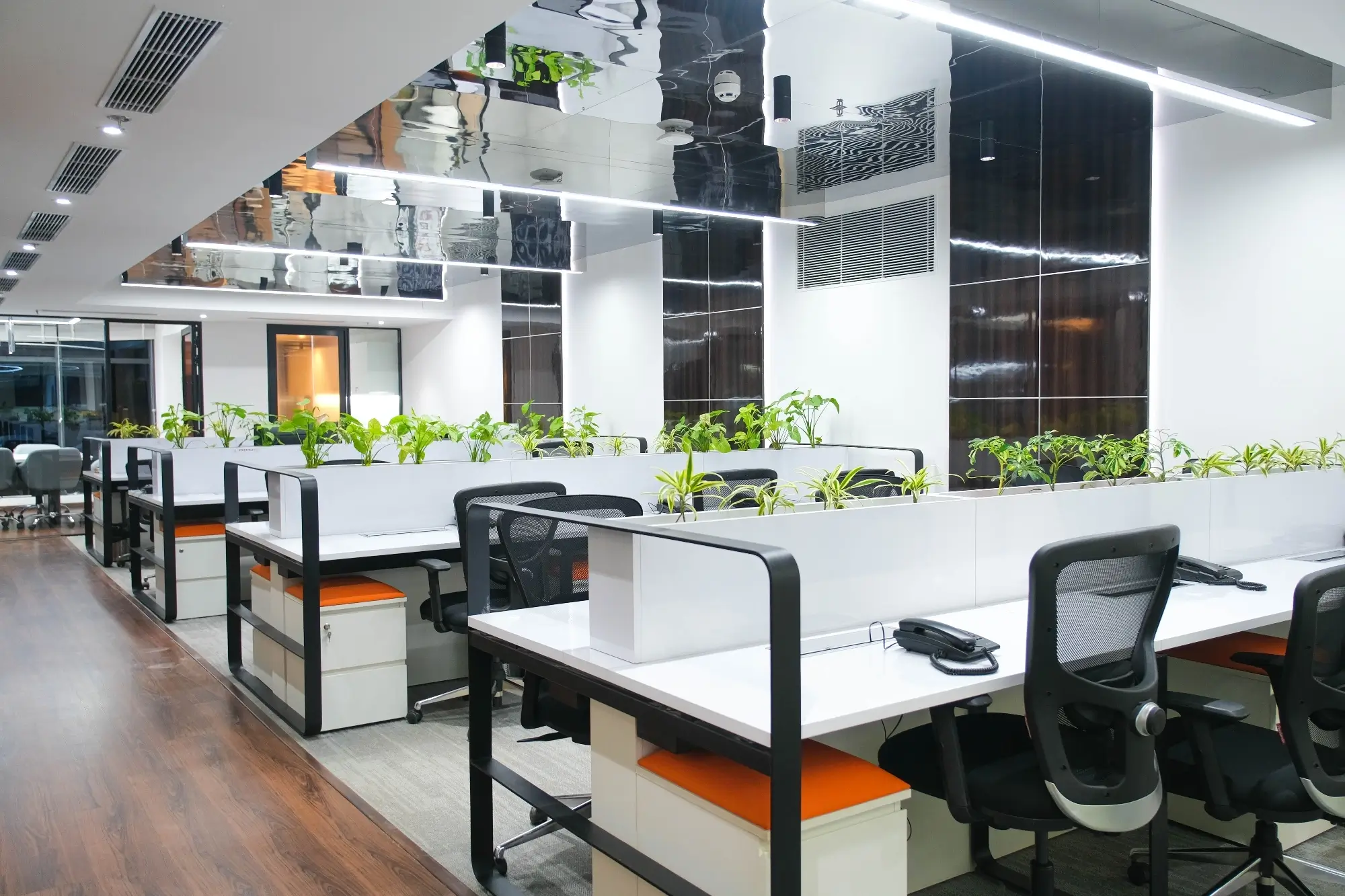
Conclusion
Building a cohesive and visually engaging workspace goes beyond mere aesthetics; it shapes the overall work culture, influences productivity, and reflects brand integrity. By integrating colors, textures, and materials thoughtfully, offices can become environments that inspire collaboration, boost morale, and align with evolving corporate values. When it’s time to take your interior design to the next level, Orange Offices best office interior design services provides expert solutions to tailor each wall to your unique vision. A well-planned approach ensures your office walls become powerful assets—helping attract clients, retaining top talent, and nurturing a productive atmosphere for years to come.
FAQs
Blues and greens often calm the mind and aid concentration, especially in desk-centric work zones
Acoustic panels, textured dividers, and strategic placement of fabric-wrapped walls can help reduce sound
Eco-friendly paints and reclaimed wood may have higher upfront costs but often yield long-term savings and align with corporate sustainability goals
Restrict vibrant shades to accent walls or small sections, balancing them with neutrals to maintain sophistication
Focus on lighter color schemes, reflective surfaces, and layered lighting to prevent a dull atmosphere

